Black Henbane
Information
Hyoscyamus niger - Solanaceae Family - Annual or Biennial
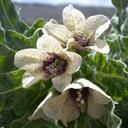
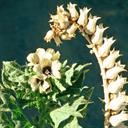
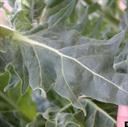
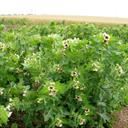
Identification
- Flowers: Cream to green with purple throats and 5 lobes.
- Seeds: Small, black seeds. Black henbane is a prolific seed producer, with each plant having the capacity to produce up to half a million seeds.
- Leaves: Fetid smelling leaves 8 inches in length covered with greasy hairs.
- Flowering Time: Spring to early fall.
- Life cycle: Annual or biennial that can grow up to 3 ft. Native to the Mediterranean.
Impacts
- Common weed on rangeland, pastures, roadsides, and waste areas.
- Outcompetes native plants for sunlight and other resources.
- Although it is poisonous to most mammals (including humans), it has sedative properties that have been used medicinally for hundreds of years.
Control
Most effective control methods
- For small infestations, hand-pulling or digging can be effective if the taproot is entirely removed. To prevent seed dispersal once pulled, plants with mature fruits should be bagged and disposed of in the trash. The area must be monitored for new seedlings for at least four years. Wear gloves and protective clothing when handling the plants to prevent rashes.
- Black henbane can also be disked or plowed and does not tolerate other forms of cultivation.
- For larger infestations, or when mechanical or cultural methods are not viable, selective chemical applications can be affective. Herbicide options include: glyphosate, dicamba, 2,4-D and metsulfuron, and picloram.
- No biological control options are currently available.
Control methods and timing
| March | April | May | June | July | Aug | Sept | Oct |
|---|---|---|---|---|---|---|---|
|
Prev Mech Chem |
Prev Mech Chem |
Prev Mech |
Prev Mech |
Prev Mech |
Prev Mech |
Prevention (Prev) Monitor and destroy new plants before seed production.
Mechanical (Mech) Hand pulling, digging, cutting, mowing and tilling.
Cultural (Cult) Biological control agents, livestock grazing, and revegetation practices.
Chemical (Chem) Selective herbicides based on the plant and the specific location. Check our weed fact sheets for specific control information.
Large Images
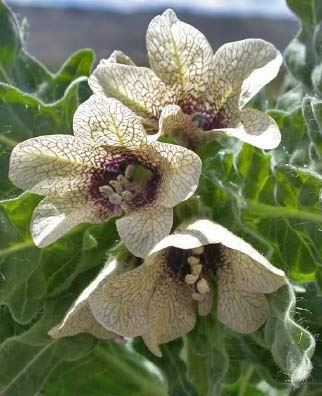
Black henbane: flowers
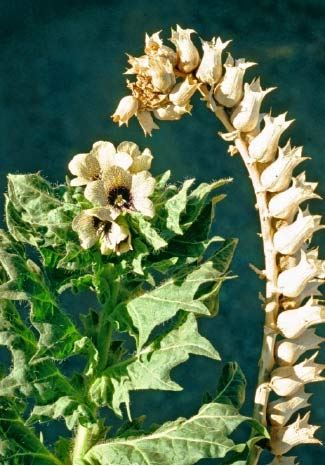
Black henbane: flowers and seed capsules
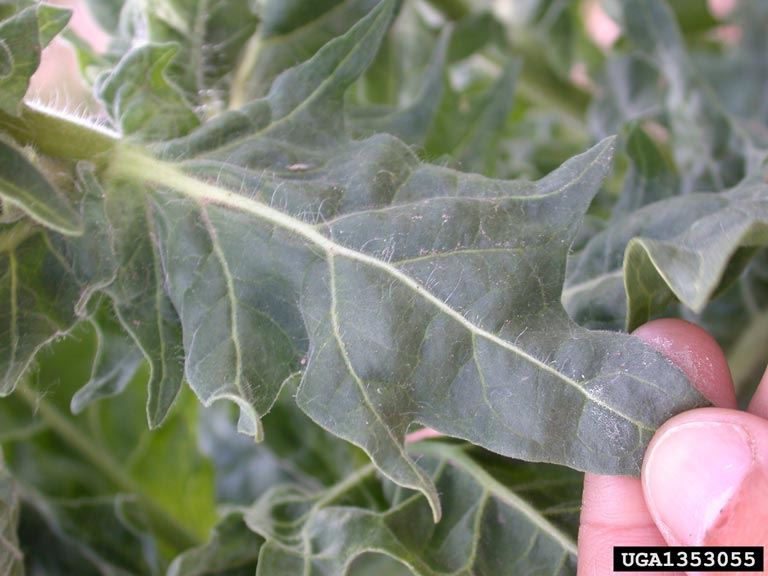
Black henbane: foliage
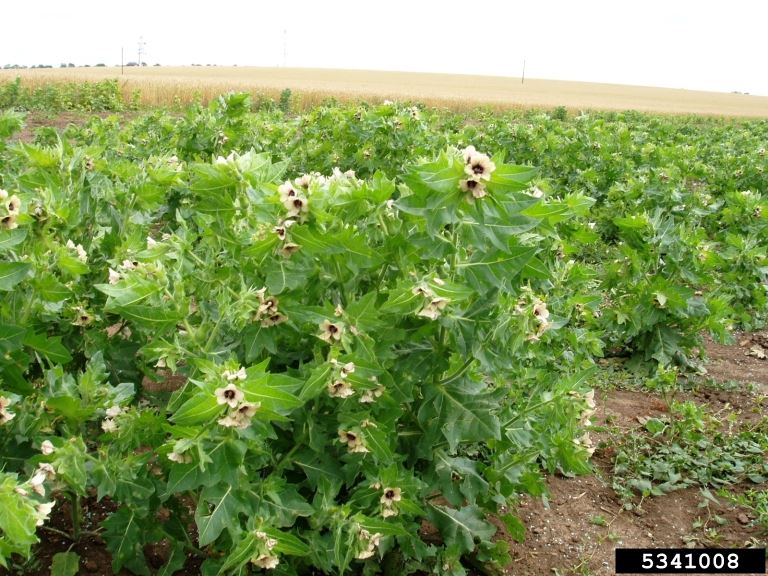
Black henbane: infestation
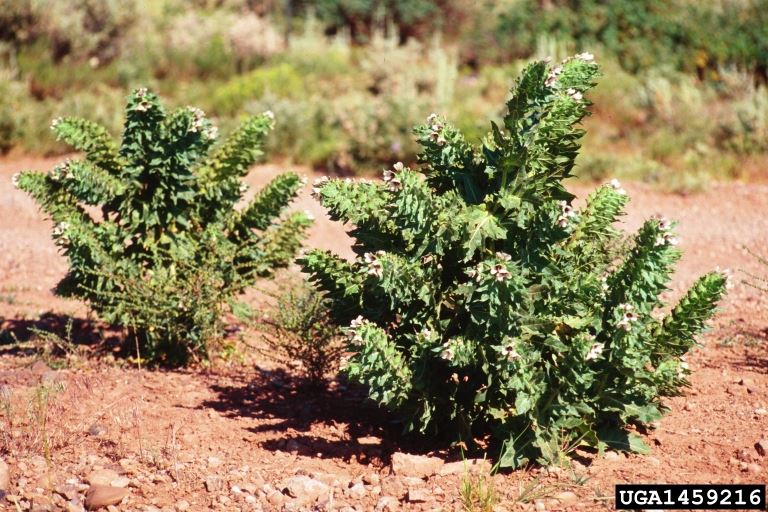
Black henbane: full plants
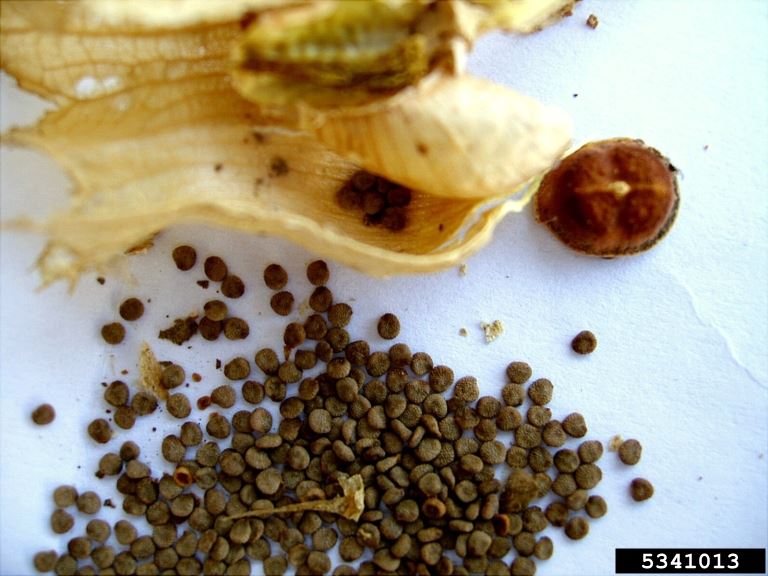
Black henbane: seeds
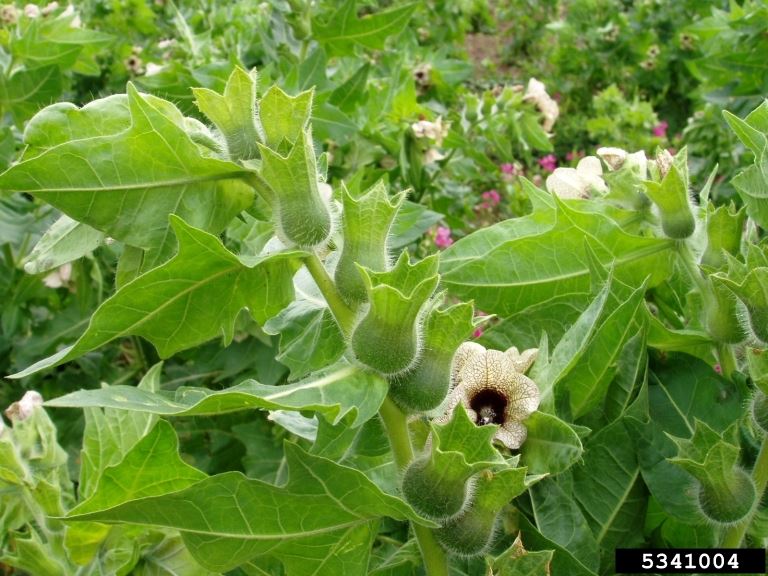
Black henbane: fruit
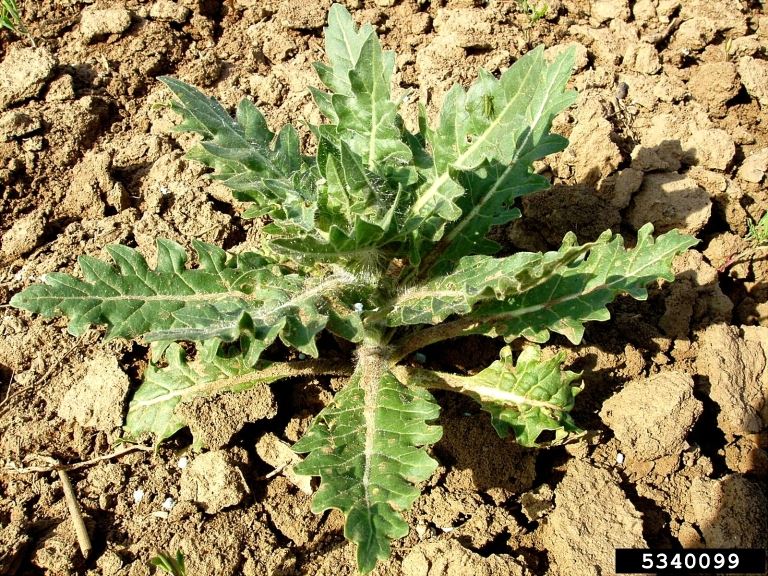
Black henbane: foliage
Resources
-
Links
- University of Nevada Cooperative Extension: Managing Black Henbane PDF
-
References
DiTomaso, J.M., G.B. Kyser et al. (2013). Weed Control in Natural Areas in the Western United States [PDF file]. Weed Research and Information Center, University of California. Retrieved from https://wric.ucdavis.edu/information/natural-areas/wr_H/Hyoscyamus.pdf View PDF
Fettig, C. & Hufbauer, R. (2015, July 08). Introduced North American black henbane (Hyoscyamus niger) populations are biennial. Retrieved from https://www.techlinenews.com/resources/2015/introduced-north-american-black-henbane-hyoscyamus-niger-populations-are-biennial
Invasive Species Compendium. (2017, November 22). Black henbane (Hyoscyamus niger). Retrieved from https://www.cabi.org/isc/datasheet/28251
Montana State University Extension. (2017, May). Black Henbane: Identification, biology and integrated management [PDF file]. Retrieved from http://msuextension.org/publications/AgandNaturalResources/MT201005AG.pdf View PDF
National Park Service. (2010). Exotic species: Black henbane. Retrieved from https://www.nps.gov/articles/black-henbane.htm
Washington State Noxious Weed Control Board. (2015). Written findings of the Washington state noxious weed control board [PDF file]. Retrieved from https://www.nwcb.wa.gov/images/weeds/Hyoscyamus-WF.pdf View PDF




